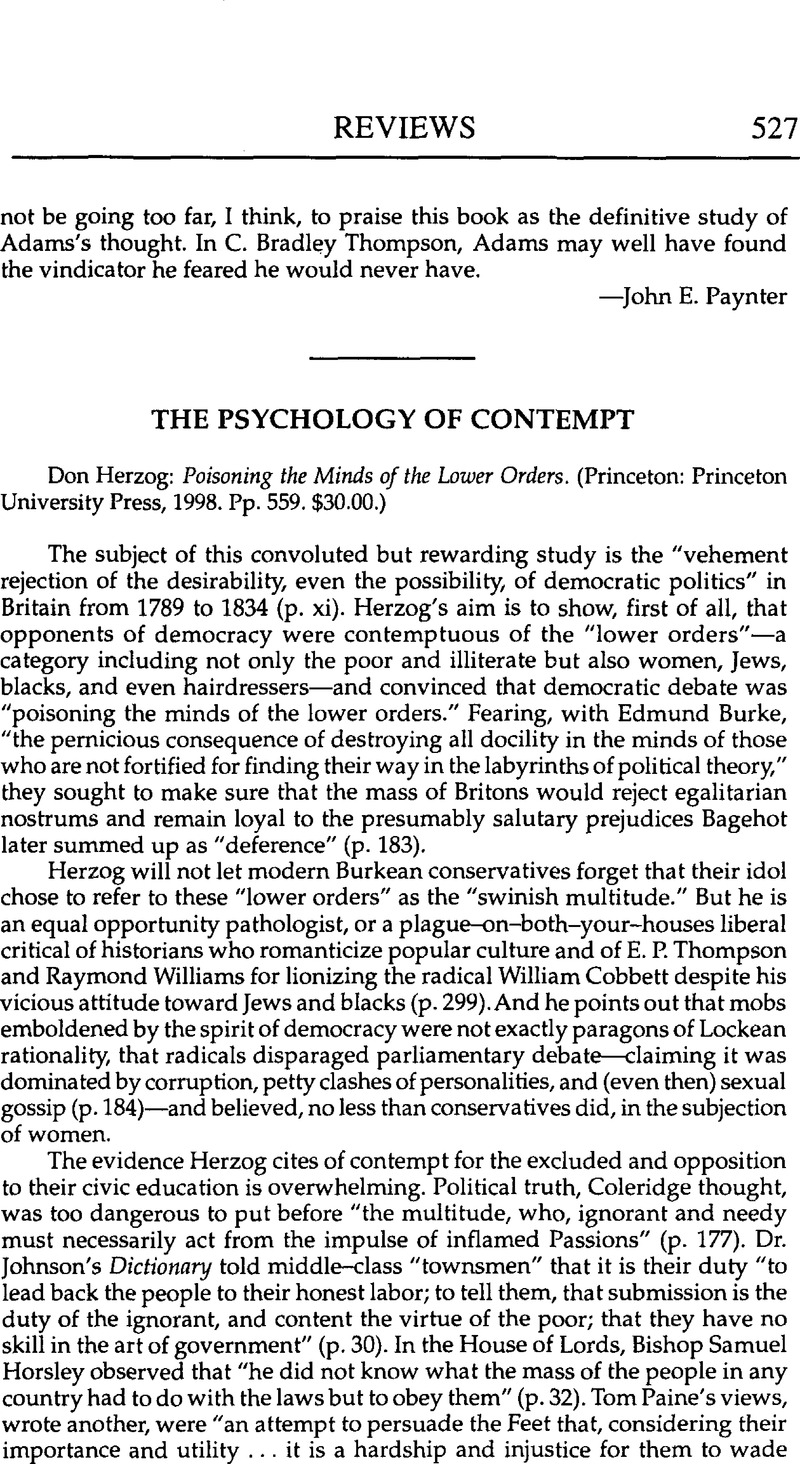Crossref Citations
This article has been cited by the following publications. This list is generated based on data provided by Crossref.
Wickman, Scott Allen
Daniels, M. Harry
White, Lyle J.
and
Fesmire, Steven A.
1999.
A “Primer” in Conceptual Metaphor for Counselors.
Journal of Counseling & Development,
Vol. 77,
Issue. 4,
p.
389.
BAXTER, JANE
and
CHUA, WAI FONG
1999.
Now And The Future.
Australian Accounting Review,
Vol. 9,
Issue. 19,
p.
3.
Schaeffer, John D.
2000.
Metonymies We Read By: Rhetoric, Truth and the Eucharist in Milton's Areopagitica.
Milton Quarterly,
Vol. 34,
Issue. 3,
p.
84.
Martin, Emily
2000.
Mind‐Body Problems.
American Ethnologist,
Vol. 27,
Issue. 3,
p.
569.
Yerxa, Elizabeth J.
2000.
Occupational science: a renaissance of service to humankind through knowledge.
Occupational Therapy International,
Vol. 7,
Issue. 2,
p.
87.
Rosa, José Antonio
2001.
Embodied‐concept use in sense making by marketing managers.
Psychology & Marketing,
Vol. 18,
Issue. 5,
p.
445.
Rennie, David L.
2001.
The client as a self‐aware agent in counselling and psychotherapy.
Counselling and Psychotherapy Research,
Vol. 1,
Issue. 2,
p.
82.
Brier, Søren
2001.
Cybersemiotics: a reconceptualization of the foundation for information science.
Systems Research and Behavioral Science,
Vol. 18,
Issue. 5,
p.
421.
Neuman, Yair
2001.
On Turing's carnal error: some guidelines for a contextual inquiry into the embodied mind.
Systems Research and Behavioral Science,
Vol. 18,
Issue. 6,
p.
557.
Zubrowski, Bernie
2002.
A curriculum framework based on archetypal phenomena and technologies.
Science Education,
Vol. 86,
Issue. 4,
p.
481.
Marshak, Robert J.
2002.
Changing the language of change: how new contexts and concepts are challenging the ways we think and talk about organizational change.
Strategic Change,
Vol. 11,
Issue. 5,
p.
279.
Jones, Daniela M. Bailer
2002.
The Blackwell Guide to the Philosophy of Science.
p.
108.
Throop, C. Jason
2002.
Experience, Coherence, and Culture: The Significance of Dilthey's 'Descriptive Psychology' for the Anthropology of Consciousness.
Anthropology of Consciousness,
Vol. 13,
Issue. 1,
p.
2.
Hubbard, Timothy L.
2003.
Further Correspondences and Similarities of Shamanism and Cognitive Science: Mental Representation, Implicit Processing, and Cognitive Structures.
Anthropology of Consciousness,
Vol. 14,
Issue. 1,
p.
40.
Neuman, Yair
2003.
Turtles all the way down: outlines for a dynamic theory of epistemology.
Systems Research and Behavioral Science,
Vol. 20,
Issue. 6,
p.
521.
Budden, Ashwin
2003.
Pathologizing Possession: An Essay on Mind, Self, and Experience in Dissociation.
Anthropology of Consciousness,
Vol. 14,
Issue. 2,
p.
27.
2003.
Reviews.
Zygon®,
Vol. 38,
Issue. 4,
p.
981.
Wickman, Scott A.
and
Campbell, Cynthia
2003.
The Coconstruction of Congruency: Investigating the Conceptual Metaphors of Carl Rogers and Gloria.
Counselor Education and Supervision,
Vol. 43,
Issue. 1,
p.
15.
Banks, William P.
and
Farber, Ilya
2003.
Handbook of Psychology.
p.
1.
Franks, David D.
2003.
Mutual Interests, Different Lenses: Current Neuroscience and Symbolic Interaction.
Symbolic Interaction,
Vol. 26,
Issue. 4,
p.
613.



